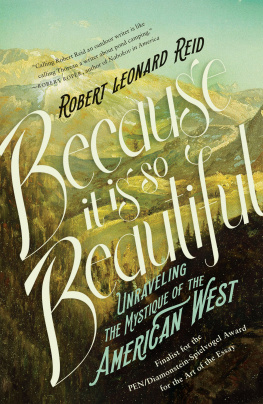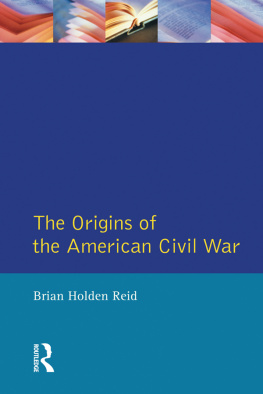

Works by Robert Leonard Reid
Nonfiction
Mountains of the Great Blue Dream
America, New Mexico
Arctic Circle
Sacred Music
The Bristlecone Mass
Musical Theater
I Say Nevada!
I Say Nevada! (Government Bailout Edition)
None of the Above!
Anthology (editor)
A Treasury of the Sierra Nevada

Copyright 2017 by Robert Leonard Reid
First Counterpoint hardcover edition: June 2017
All rights reserved under International and Pan-American Copyright Conventions. No part of this book may be used or reproduced in any manner whatsoever without written permission from the publisher, except in the case of brief quotations embodied in critical articles and reviews.
Honeymoon Blues
Words and Music by Robert Johnson
Copyright 1978, 1990, 1991 Standing Ovation and Encore Music (SESAC)
Under license from The Bicycle Music Company
All Rights Reserved
Reprinted by Permission of Hal Leonard LLC
Library of Congress Cataloging-in-Publication Data Is Available
Jacket design by Jen Heuer
Book design by www.DominiDragoone.com
eISBN 978-1-61902-976-7
Counterpoint Press
2560 Ninth Street, Suite 318
Berkeley, CA 94710
www.counterpointpress.com
Printed in the United States of America
Distributed by Publishers Group West
10 9 8 7 6 5 4 3 2 1
for
David Hertz
All the wild world is beautiful,
and it matters but little where we go,
to highlands or lowlands, woods or plains,
on the sea or land or down among the crystals of waves
or high in a balloon in the sky;
through all the climates, hot or cold, storms and calms,
everywhere and always we are in Gods eternal beauty and love.
So universally true is this, the spot where we chance to be always seems the best.
John Muir
Contents
Authors Note
T he title of this collection originates in a comment made by the writer Barry Lopez at the conclusion of a talk he gave many years ago in Sacramento. I detail the circumstances of that talk, and its relevance to this collection, in the books opening selection, To Live Ones Life.
Intruders on a Lifeless Ridge, The Fire and the Rose, and Ling-Ling Has Killed Another Baby are published here for the first time. Each of the remaining pieces appeared earlier in one of my nonfiction books ( Mountains of the Great Blue Dream , Arctic Circle , or America, New Mexico ) or in some other publication (see the acknowledgments for credits). Ive added material to Decrescendo and The Condors Last Flight to document changes in the statuses of wolves and California condors as of 2017. Lastly, Ive made minor changes to a few of the pieces to reflect the passage of time and smoothed out some clumsy constructions that somehow found their way into the selections the first time around.
A native Pennsylvanian, I discovered the majesty and wonder of the American West as a teenager, during two month-long summer sojourns with my parents. The first took us to New Mexico and Arizona, the second to the Pacific Northwest. After college, I taught mathematics in New York City private schools for a few years. Then, no longer able to resist the call that had beckoned since my two summer awakenings, I went west. Ive been here forty yearstwelve in California, eight in New Mexico, twenty in what I intend to be my last stop, northwestern Nevada. During those years Ive traveled widely and written extensively about the West, the darkness no less than the light. So it is that the pieces in this collection document the astonishing journey of the Porcupine caribou herd across northern Alaska and Yukon and the Long Walk of the Navajo from Arizona to eastern New Mexico; the sublime beauty of Californias High Sierra shoulder-to-shoulder with the plight of the homeless in Santa Fe. Forty years ago I set out to find the West. The pieces in this collection are the record of my quest.
Robert Leonard Reid
Carson City
Winter 2016

To Live Ones Life
T he writers lonely, harrowing struggle to give shape to his or her elusive vision of the worldto complete a book, to discover among the fragments of a thought or a dream the precise image needed to breathe life into a poemis a familiar chapter in the annals of pain and grief. So, too, are the equally daunting tasks the writer faces once the project has been completedfinding a market, pocketing a few bucks (maybe) in order to repeat the whole grim process again as quickly as possible. As Philip Roth explains, hilariously, in The Ghost Writer :
I turn sentences around. Thats my life. I write a sentence and then I turn it around. Then I look at it and I turn it around again. Then I have lunch. Then I come back in and write another sentence. Then I have tea and turn the new sentence around. Then I read the two sentences over and turn them both around. Then I lie down on my sofa and think. Then I get up and throw them out and start from the beginning.
Writers are the modern-day equivalent of medieval monks: They spend their lives in solitary confinement inscribing manuscripts at turtle speed while flogging themselves dutifully. If someone were to open their cell doors and offer to set them free, theyd decline. Thats why youll never see a writer at the Elks Club or Republican Party headquarters: Writers arent joiners. That, too, is why writers unions have never been successful. Its not that publishers cant be dragged to the bargaining table; some will come, albeit reluctantly. Writers, on the other hand, will never show up. They dont want to unite. Theyre too busy turning sentences around.
Of the several unfortunate effects that the writing life engenders, perhaps the least remarked-upon is the distancing it accomplishes, one writer from the other. Unlike members of many professions, writers dont relax by, say, playing softball in Thursday-after-work leagues, and they dont hang around water coolers trading stories with their colleagues. While everyone else is having a good time, writers are staring at the walls of their darkened rooms, or teaching dreadful nineteenth-century novels to bored college students, or going to the library to research hamster mating rituals, all solitarily. If they do meet other writers, its usually as panel members at conferences, from which they flee as soon as the panels are adjourned in order to return as quickly as possible to their darkened rooms.
In the empty quarter of the West, this distancing effect is especially pronounced. In northwest Nevada, where I reside, many writers choose to live apart not only from other writers but from nearly everyone else, too. I know of poets and novelists who make their homes in hamlets named Virginia City, Dayton, Sierraville, Truckee, Glenbrookplaces that make my own port of call, Carson City, seem practically metropolitan.
However non-communal the writing profession may be, it has spawned a vital community of writers, self-contradictory though this may seem. Forced by circumstances into their cheerless gulags, writers recognize in one another their common struggles and the costs they exact; the battle scars forge sentiments of mutual admiration and respect, and friendships that are lasting and strong. Writers blurb each others books (imagine Coke plugging Pepsi: Monumental! Haunting! One of the truly great colas!), exchange forewords and dedications (For our friends at Coke, with profound gratitude). Even writers at the top of their profession stay in touch with those below, taking on protgs, showing up in small towns to read and field questions at the local bookstore or to offer words of encouragement to students at the community college, answering letters from their fans. (Among a handful of thank-you letters Ive collected from celebrated writers is a reply from E.B. White that includes this vintage White locution: Im not writing much anymore, being seventy-seven, but am still busy throwing books together in order to create a commotion around the house.) Many teach, and while a few are famed for their ruthless criticism (Denise Levertov comes to mind), many more follow the lead of Raymond Carver, who always had a kind word for even the most ham-fisted effort. (Novelist Jay McInerney tells of an aspiring writer in one of Carvers classes who read a bizarre story in which a young couple meets, falls in love, marries, and opens a restaurant, the opening night of which is marred by a band of submachine-gun-toting terrorists who burst in and kill everyone in the restaurant. End of story. Aghast, the other students in the class crucified the writer, then turned to Carver. Clearly at a loss, he paused, then said softly, Well, sometimes a story needs a submachine gun.) In what other field are the great and the ungreat so closely allied?
Next page









